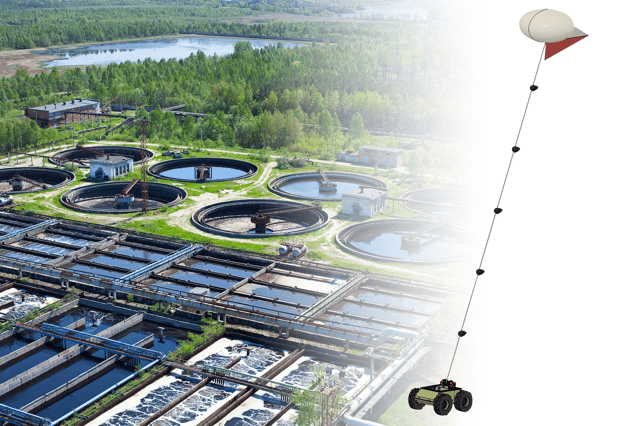University of Surrey to build new kite-flying robots to monitor greenhouse gas emissions


A UK university plans to build a new robotic device capable of physically monitoring greenhouse gases - and which way the wind is blowing them - by flying a kite.
The University of Surrey has received a £620,000 government grant, to develop new, lightweight wireless gas sensors. These will be attached to helium kites and flown by an autonomous robot - a combination researchers hope will be able to monitor emissions.
Advertisement
Hide AdAdvertisement
Hide AdThe UK has pledged to reach net zero emissions by 2050. But robotics lecturer Dr Robert Siddall said that if the world is really to reach this lofty goal, "we need to be able to check that emissions really are reducing".
"Previous projects tried to use drones to monitor gas flux – but the quality of their measurements wasn't good, their flight time was too short, and airspace restrictions limited their use," he said. "Our robot balloon towers, kitted out with sensors and built here at Surrey, should solve many of these challenges."
The team will work with several local businesses on the device. University spin-out company Surrey Sensors will build the sensors, while Hampshire's Allsopp Helikites will provide the helium balloons.
The complex project will also combine a range of skills from across the University - from fluid dynamics, to building robots, to analysing data and sensing the emissions themselves. The robot will then be tested out in a variety of locations both in the UK and abroad, including a Thames Water wastewater treatment centre, the University’s Blackwell Farm, and rice paddies in Spain.
Advertisement
Hide AdAdvertisement
Hide AdSurrey senior environmental engineering lecturer Dr Bing Guo said that Thames Water was chosen, as the UK's water sector faced huge challenges in achieving net zero. "One of the biggest issues is that wastewater treatment systems produce methane and nitrous oxide. These have a much greater warming potential than that of carbon dioxide."
Right now, she said there was no accurate and affordable way to monitor these emissions. "Our project will create innovative tools for the industry to achieve net zero."
Associate earth observation and hydrology professor added that rice farming was also one of the main methane emitters worldwide. "Farmers can access financial incentives for reducing their emissions. We are currently using satellite images to monitor whether these practices are being implemented, and using simulation models to estimate the emission reductions achieved."
"This new project will allow us to take ground measurements of the actual emissions, which we need to calibrate and verify our estimates," she added.
Advertisement
Hide AdAdvertisement
Hide AdAmber Allott is NationalWorld’s environment and sustainability specialist, covering all things green - from climate to conservation. If you liked this article you can follow Amber on X (Twitter) here and sign up for the free daily NationalWorld Today newsletter here - with Amber bringing you the UK's most important, pressing, weird and wonderful environmental stories every Tuesday.
Comment Guidelines
National World encourages reader discussion on our stories. User feedback, insights and back-and-forth exchanges add a rich layer of context to reporting. Please review our Community Guidelines before commenting.
